Spot & Stop the Early Stage of Tooth Decay (With Pictures)
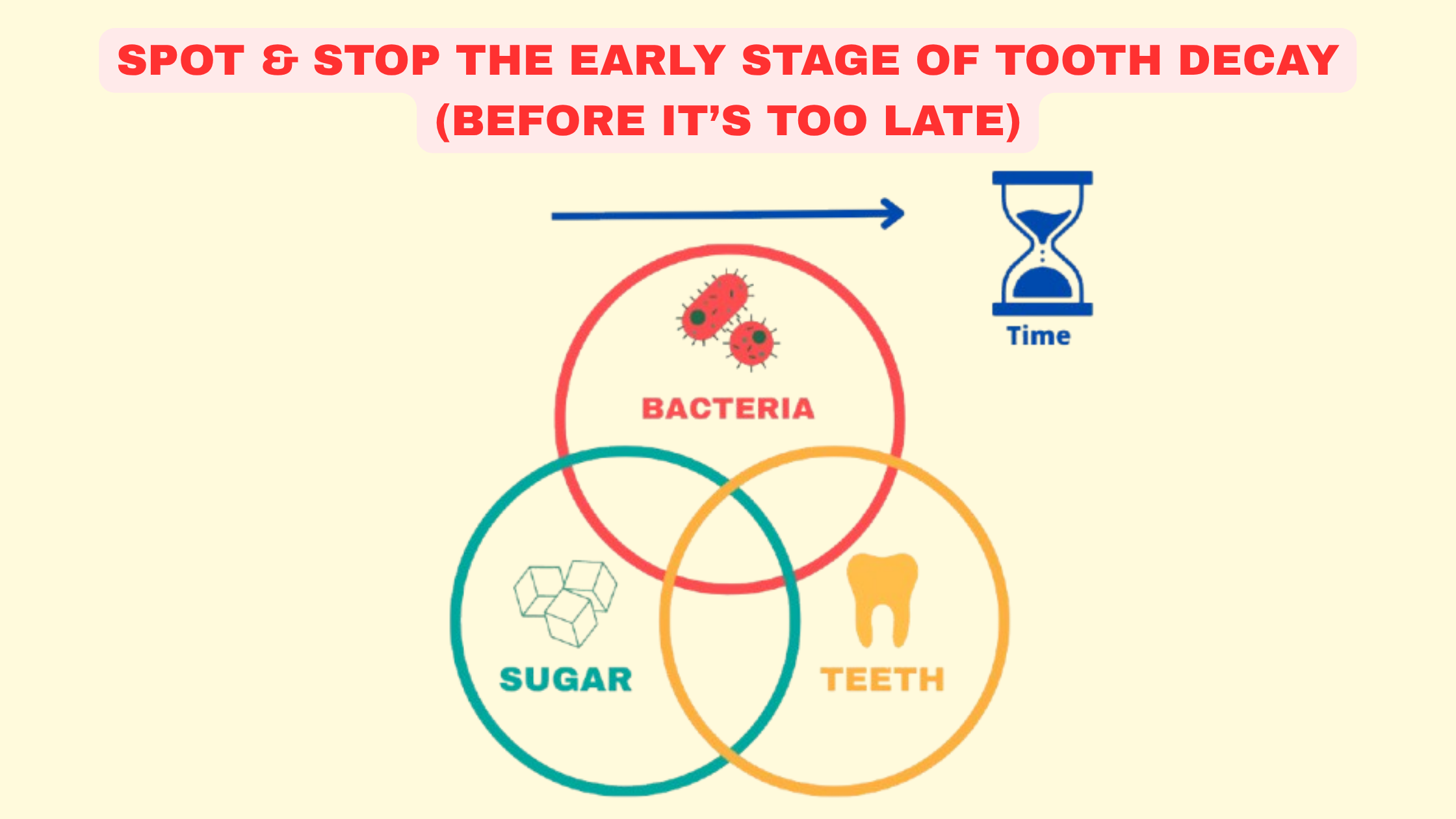 Catching tooth decay in its early stage is one of the best things you can do for your dental health. Why? Because at this point, the damage is still completely reversible.
Catching tooth decay in its early stage is one of the best things you can do for your dental health. Why? Because at this point, the damage is still completely reversible.
The thing is early decay is painless and easy to miss. It often develops quietly without obvious signs.
By the time you notice a dark spot or a visible hole, the damage is no longer reversible.
In this guide, we’ll walk you through a simple step-by-step process to spot tooth decay early—before it’s too late. There will also be helpful images so you’ll know exactly what to look for.
In this article:
1. How Does Tooth Decay Form and Progress?
2. What Is the Early Stage of Tooth Decay—and What Does It Look Like?
3. How to Spot the Early Stages of Tooth Decay (Step by Step)
4. How to Stop and Reverse the Early Stages of Tooth Decay Effectively
5. Signs That You’ve Successfully Reversed Early Tooth Decay
How Does Tooth Decay Form and Progress?
Before we get into the early stage of tooth decay, it’s important to understand how the process works.Tooth decay doesn’t just happen overnight. It’s a complex process that involves many factors—some that protect your teeth and others that harm them. The outcome depends on which side wins the battle.
Think of it like a balance scale:
- On one side, you have protective factors like saliva, good oral hygiene, and a mineral-rich diet.
- On the other side, there are harmful factors like dry mouth, frequent snacking, a sugar-heavy diet, and cavity-causing bacteria.
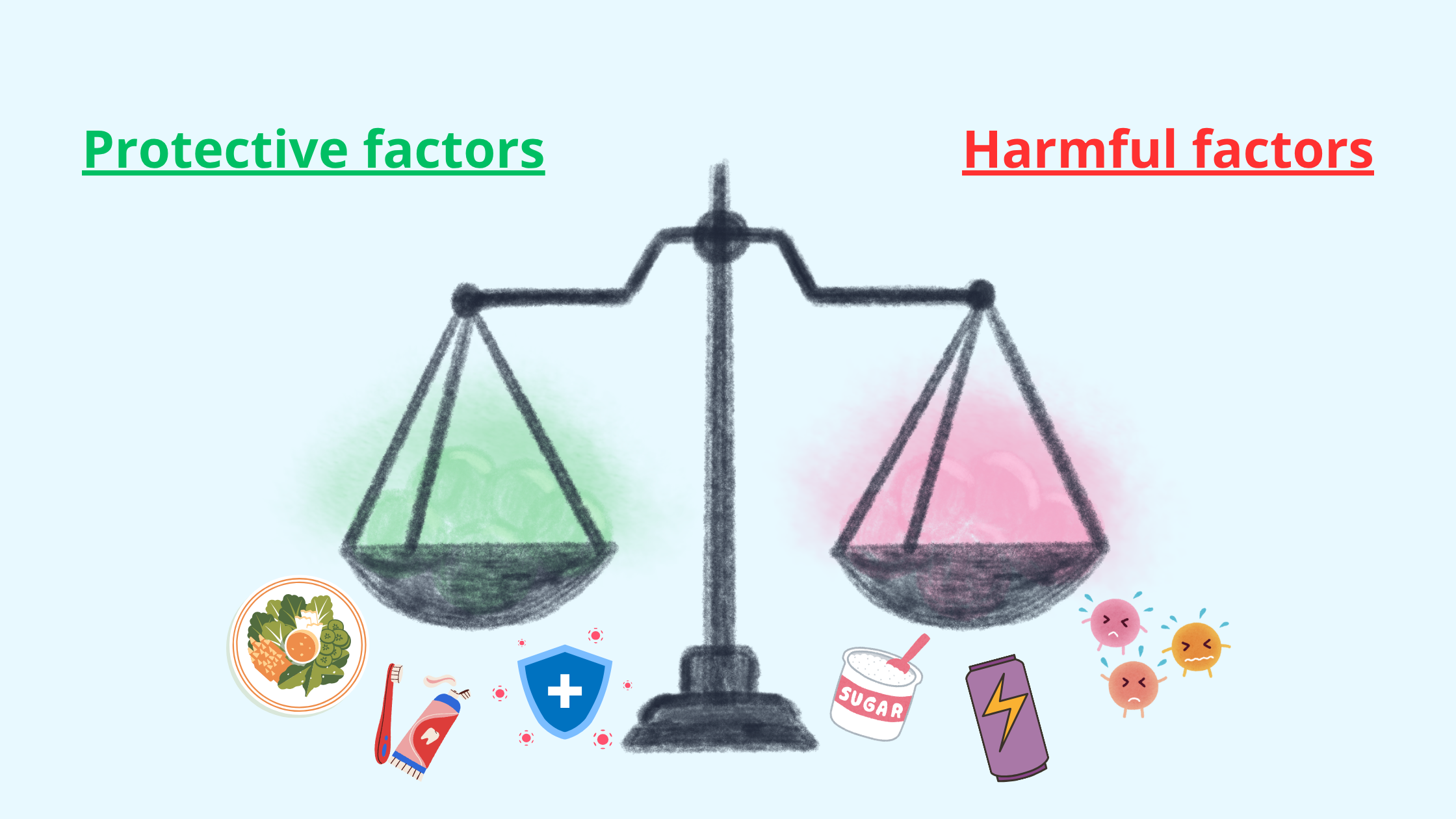
When the harmful side outweighs the protective side, your teeth become more prone to decay. But if the protective side takes over, your teeth are better shielded and cavities are less likely to form.
Here’s a breakdown of how tooth decay begins and progresses:
- When you eat sugary foods or drinks, bacteria in your mouth feed on the sugars and produce acid.
- These acids start dissolving the minerals in your enamel (mainly calcium and phosphorus) in a process called demineralization—this is the first stage of decay.
- If you have enough protective factors—like healthy saliva flow and good oral hygiene—your enamel can recover the lost minerals through a natural process called remineralization.
- However, if acid attacks are too frequent and outweigh the protection, the enamel keeps losing minerals. Eventually, a cavity forms.
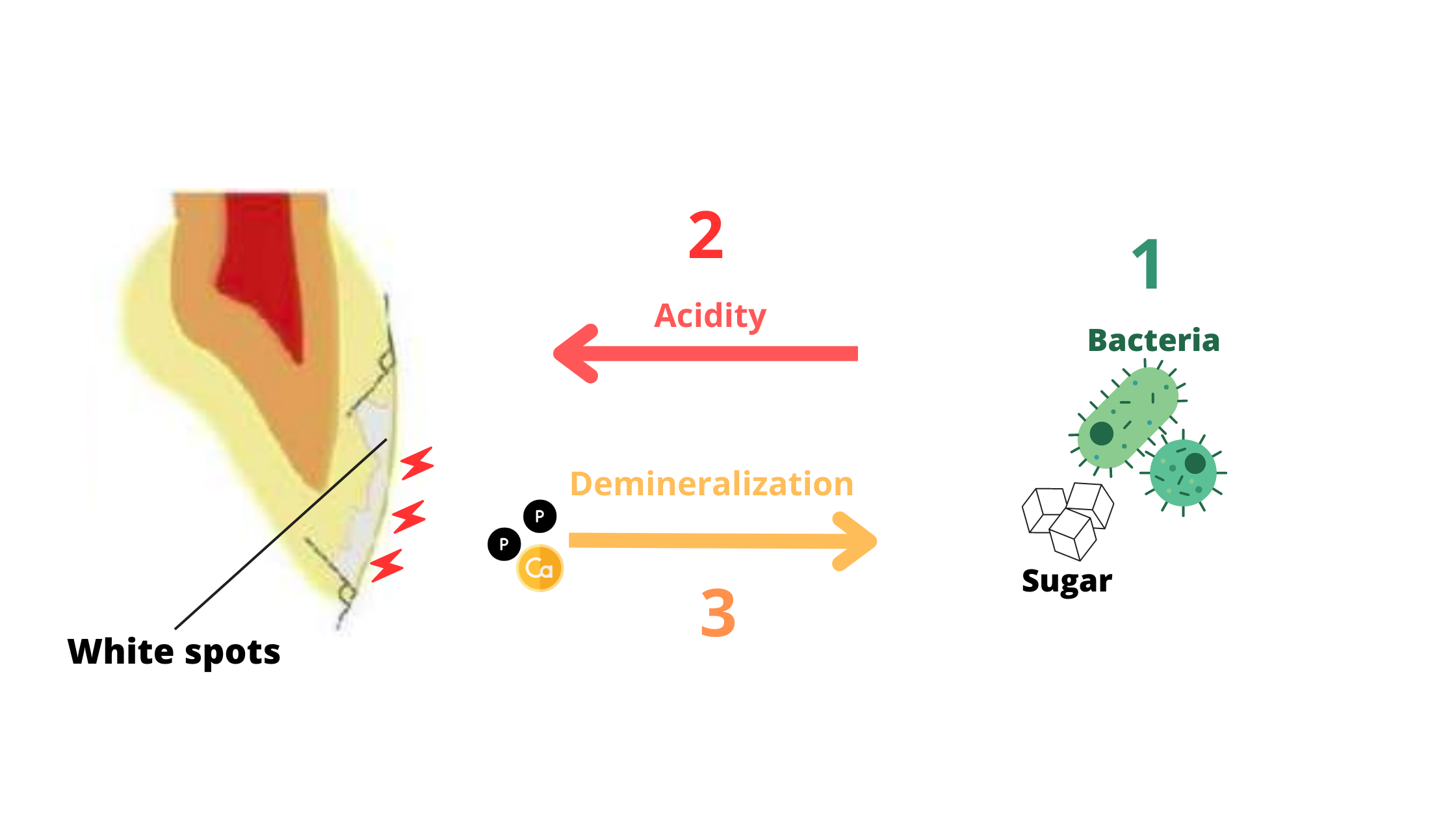
What Is the Early Stage of Tooth Decay—and What Does It Look Like?
The early stage of tooth decay affects only the enamel, the outermost layer of your tooth.It starts when acid attacks remove minerals from the enamel faster than they can be restored.
This results in the first visible signs of damage: white spot lesions. These appear as rough, chalky, or cloudy white areas on your teeth.
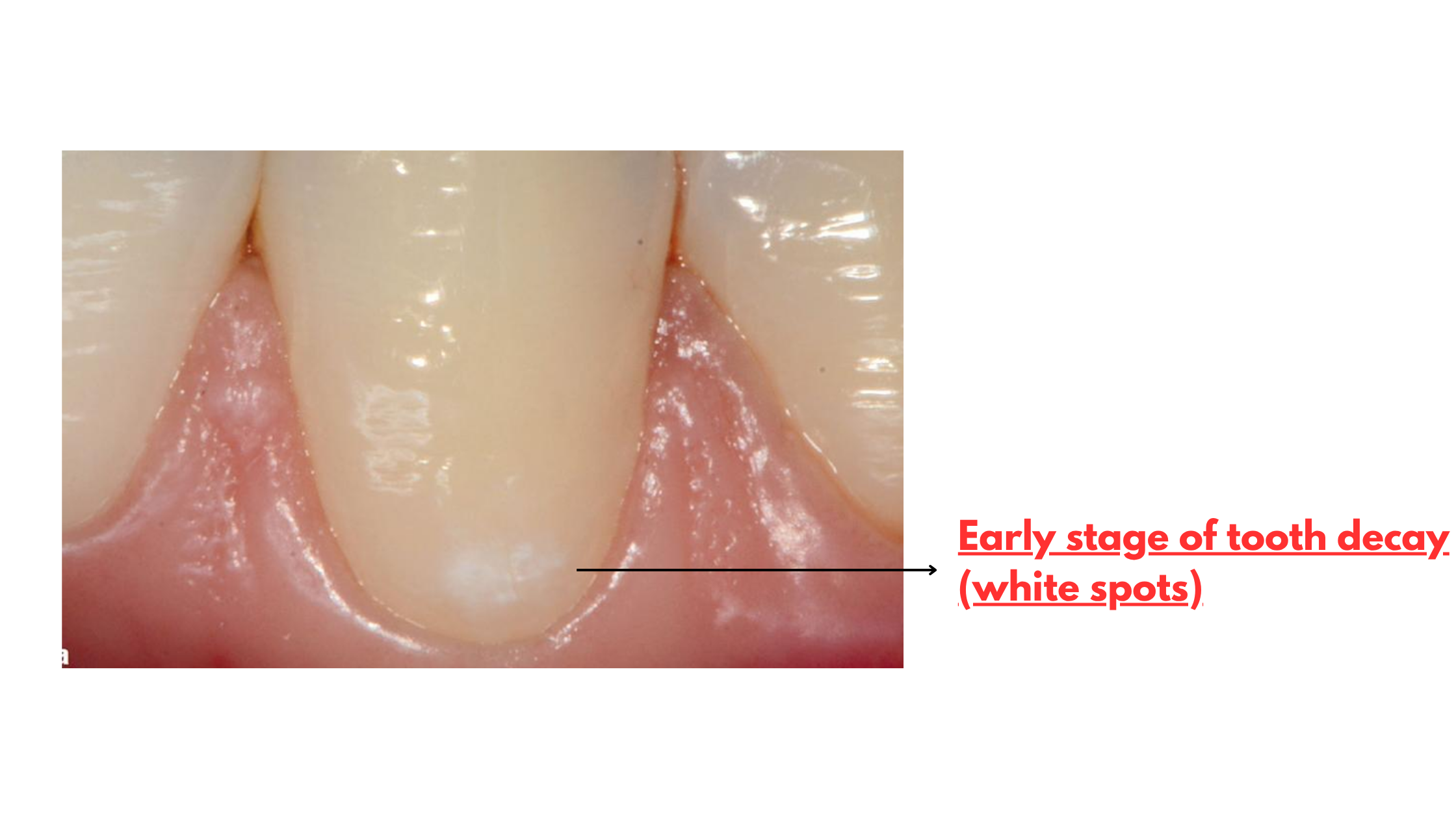
What makes these spots stand out is that they don’t reflect light like healthy enamel. They look dull, less shiny, and more opaque.
White spots are most frequently seen on the smooth surfaces of the teeth, especially near the gum line.
Over time, if these areas are exposed to staining foods or drinks—like coffee, tea, or chocolate—they can darken and turn yellow or brown.
In the pits and grooves of your back teeth (the chewing surfaces), early decay may appear darker from the start. That’s because these areas trap food easily, allowing stains to settle in and darken the early lesions.
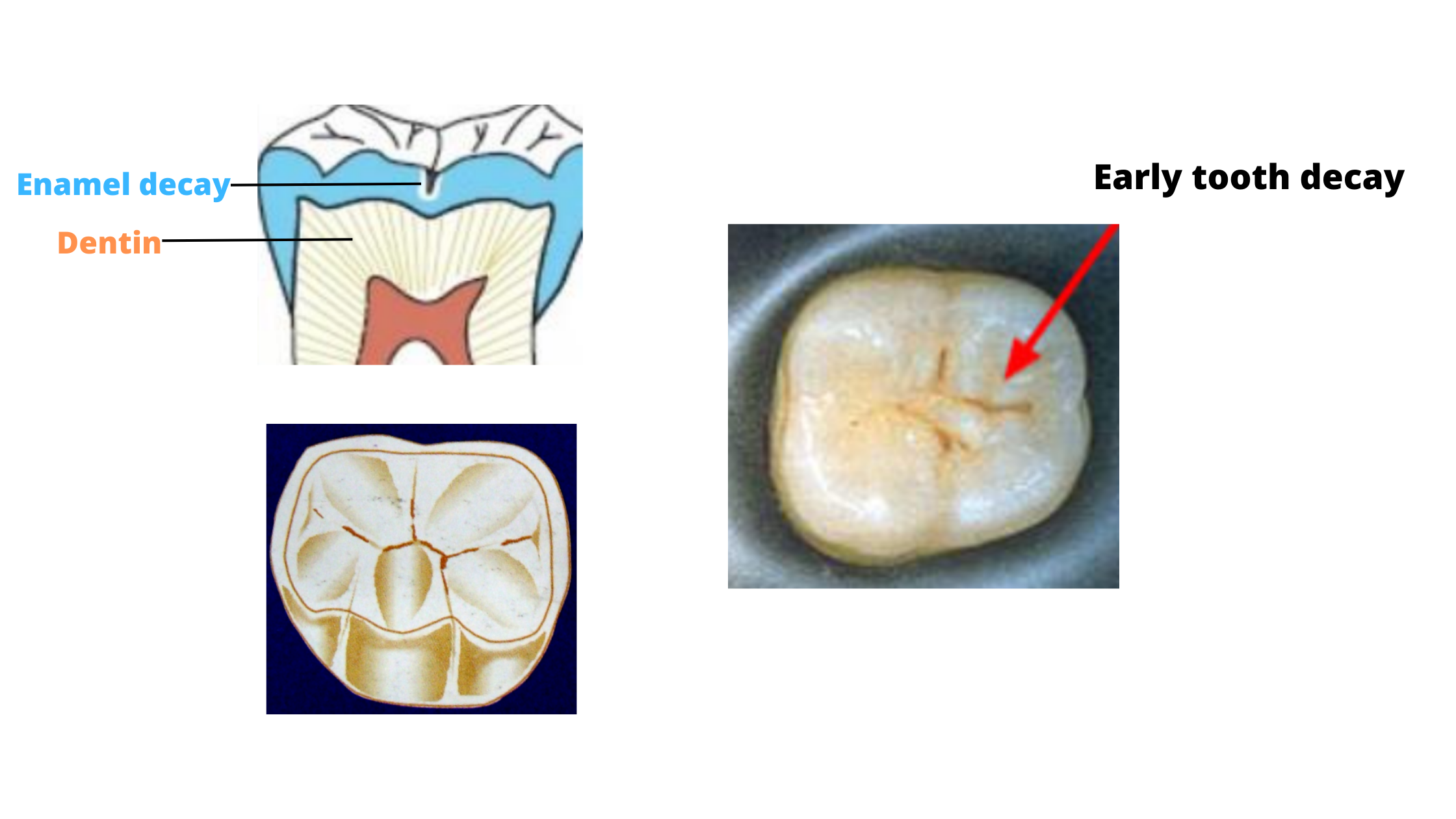
If left untreated, the decay can progress and form a hole or cavity, eventually reaching the deeper layers of the tooth—dentin and possibly the pulp. Once that happens, the damage is no longer reversible and will require professional treatment.
How to Spot the Early Stages of Tooth Decay (Step by Step)
Catching the early signs of tooth decay isn’t always easy. The first changes are often mild and subtle—and since enamel has no nerves, you won’t feel any pain to alert you that something’s wrong.Your dentist is always the best person to detect early decay. But if you’d like to check your teeth at home, there are steps you can follow to make those early changes easier to spot:
1. Clean Your Teeth

Start by brushing and flossing thoroughly. This removes any food debris or plaque that might be covering and hiding early white spots on your enamel.
2. Dry Your Teeth
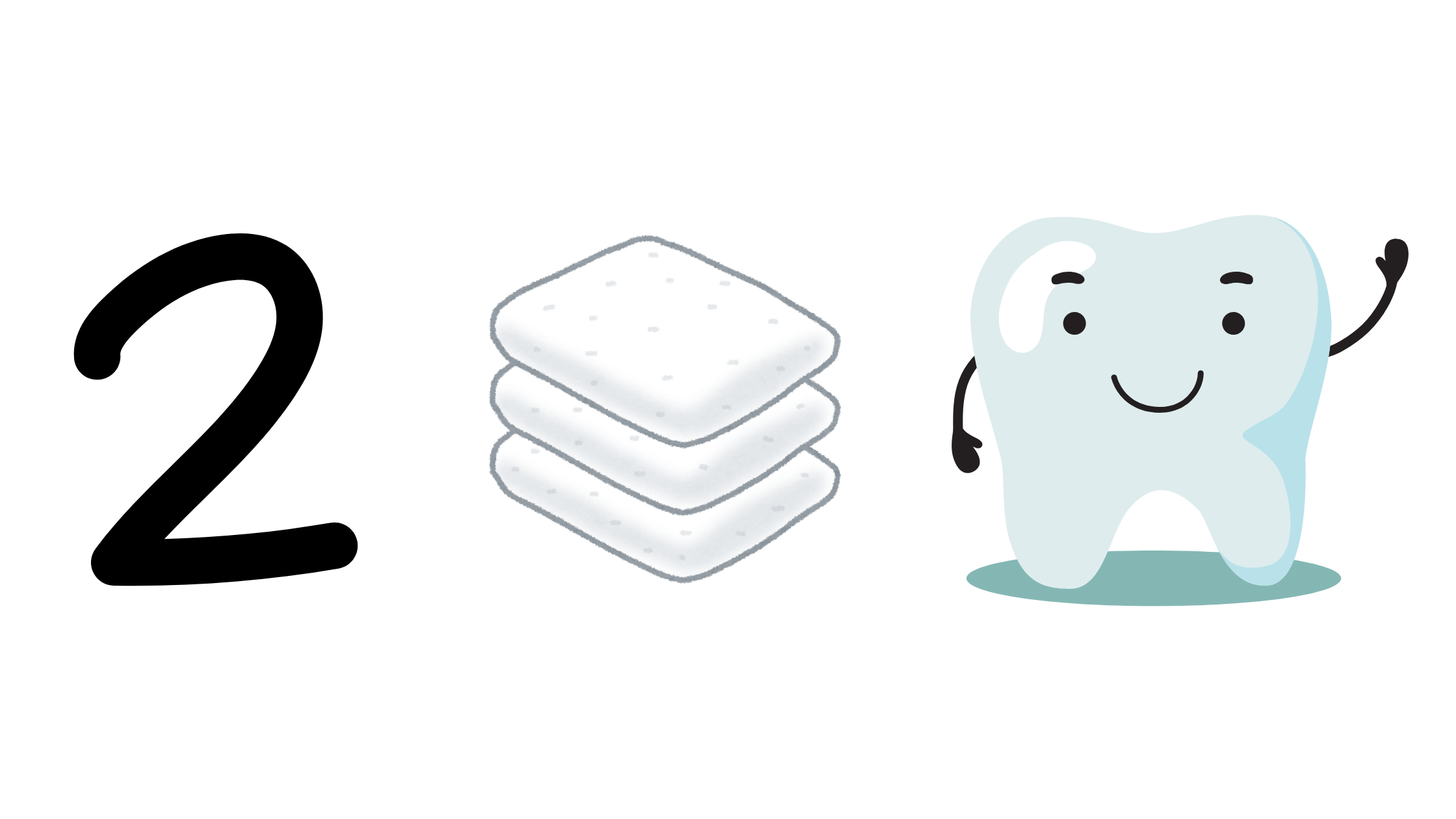
Next, use a clean cotton pad or cloth to dry your teeth.
Take your time with this step—moisture from water or saliva can easily hide early white spots, causing them to blend in with healthy enamel. Dry teeth, on the other hand, make these spots stand out more clearly.
3. Use Light to Detect Changes

Now, shine a light on your teeth—natural daylight or a flashlight.
Look closely for early signs of decay:
- On smooth surfaces: early decay will appear as white, rough, chalky spots that look dull and lack shine compared to healthy enamel.
- On chewing surfaces (pits and grooves): early decay usually appears darker (brown or black spots), as these areas stain quickly.
How to Stop and Reverse the Early Stages of Tooth Decay Effectively
If you catch tooth decay early—while it’s still limited to the outer enamel—the good news is that it’s completely reversible.By making simple changes to your oral hygiene and diet, along with using remineralizing products, you can stop these early lesions and help restore your enamel.
This works by shutting down the harmful factors and boosting the protective ones we talked about earlier.
Here are some tips:
Oral Hygiene:
Brush your teeth at least twice a day and floss once before bed. This is the foundation of healthy oral care because it removes plaque—the main culprit behind tooth decay.
Use a toothpaste that’s gentle (not abrasive) and contains a remineralizing ingredient like fluoride or alternatives such as hydroxyapatite.
Diet:
Limit snacking between meals and avoid foods and drinks that harm your teeth, especially sugary and acidic ones. Sticky foods like bread, potato chips, candy, or caramel are especially harmful because they stick to your teeth and prolong acid attacks.
Remineralizing Products:
You can enhance your oral care routine by applying a remineralizing product to your teeth once a day, ideally before bed.
These products—available as gels, mouthwashes, or foams—supply minerals like calcium, phosphorus, hydroxyapatite, and fluoride to help speed up enamel repair.
Some good products include MI Paste, Carifree gel, and ROCS gel.
Saliva:
It naturally cleans your mouth and supports enamel repair by supplying essential minerals, antimicrobials, and moisture.
You can promote your saliva production by staying well-hydrated throughout the day and chewing sugar-free, xylitol-based gum between meals.
Signs That You’ve Successfully Reversed Early Tooth Decay
With time and consistency, you can stop—and even reverse—the early stages of tooth decay. But how can you tell if you’ve succeeded?The first sign is a change in the surface texture of your tooth. The early lesion will no longer feel rough, chalky, or lifeless; instead, it will become smooth like healthy enamel. It will also lose its dull, opaque look and appear brighter as it reflects more light.
White spot lesions that are healing usually become smaller and less noticeable, though they rarely disappear completely.
Sometimes, these spots may turn yellow or brown over time. This doesn’t mean the decay is worsening—it simply means pigments from food or drinks have been absorbed and trapped inside the enamel. In fact, this can sometimes be a good sign that your treatment is working.
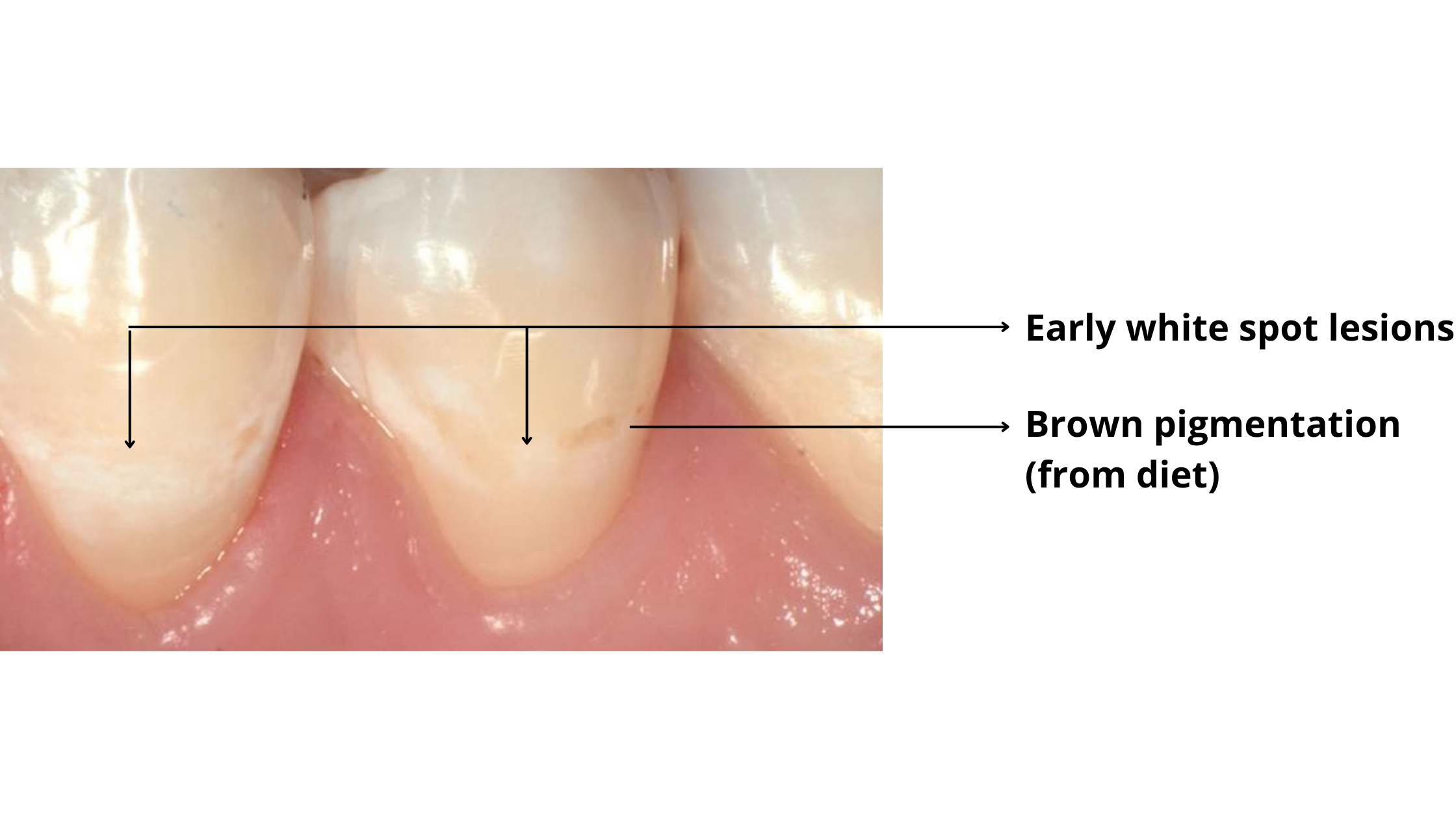
Once the surface feels hard, shiny, and smooth—just like healthy enamel—you can be confident that the early stage of tooth decay has been successfully reversed.